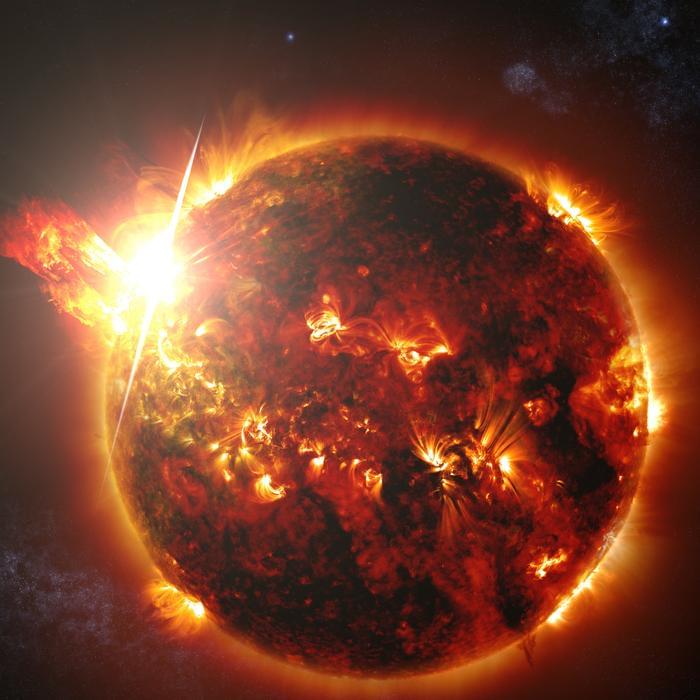“This study has changed the picture of the environments around stars less massive than our Sun, which emit very little UV light outside of flares,” said Jason Hinkle.
How can red dwarf stars, which are both smaller and cooler than our Sun, influence the habitability potential for exoplanets orbiting them? This is what a recent study published in the Monthly Notices of the Royal Astronomical Society hopes to address as a team of international researchers led by the University of Hawai’i investigated how stellar flares emanating from red dwarf stars could help ascertain the habitability potential for exoplanetary systems. This study holds the potential to help astronomers better understand the formation and evolution of exoplanetary systems throughout the cosmos and the conditions necessary for life to exist on these worlds.
For the study, the researchers analyzed near-ultraviolet (near-UV) and far-ultraviolet (far-UV) data obtained from the now-retired NASA GALEX space telescope of 182 stellar flares emitting from 158 stars within 100 parsecs (326 light-years) from Earth. The goal of the study was to ascertain how UV emissions influence whether a planet can host life.
In the end, the researchers found that UV radiation can either contribute to or dampen the possibility of life forming on such worlds, and specifically challenges previous hypotheses pertaining to far-UV radiation, which the researchers estimate can range between 3–12 times the energy levels compared to previously assertions. However, the team notes the processes responsible for the stronger far-UV radiation remains a mystery.
